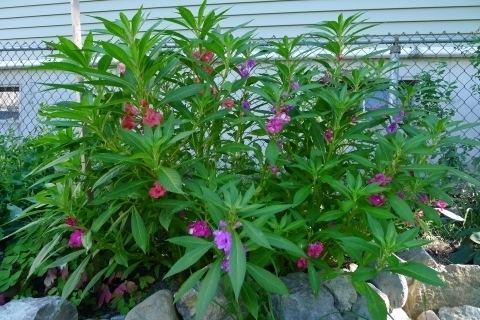Rank Species | Genus Impatiens Higher classification Touch-me-not | |
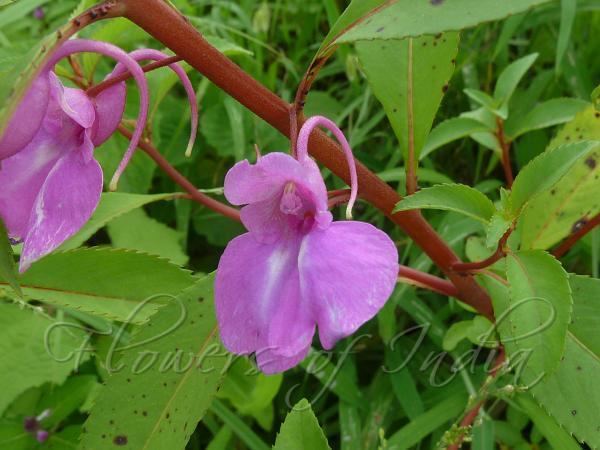 | ||
Similar Touch‑me‑not, Balsaminaceae, Impatiens walleriana, Impatiens hawkeri, Impatiens textorii | ||
164 how to collect gulmehndi balsam impatiens balsamina seeds hindi urdu 9 10 16
Impatiens balsamina (garden balsam, garden jewelweed, rose balsam, spotted snapweed, touch-me-not) is a species of Impatiens native to southern Asia in India, Bangladesh and Burma.
Contents
- 164 how to collect gulmehndi balsam impatiens balsamina seeds hindi urdu 9 10 16
- Gardening tips flowers how to grow balsam impatiens balsamina
- Human use
- Chemistry
- Ecology
- Names and etymology
- References
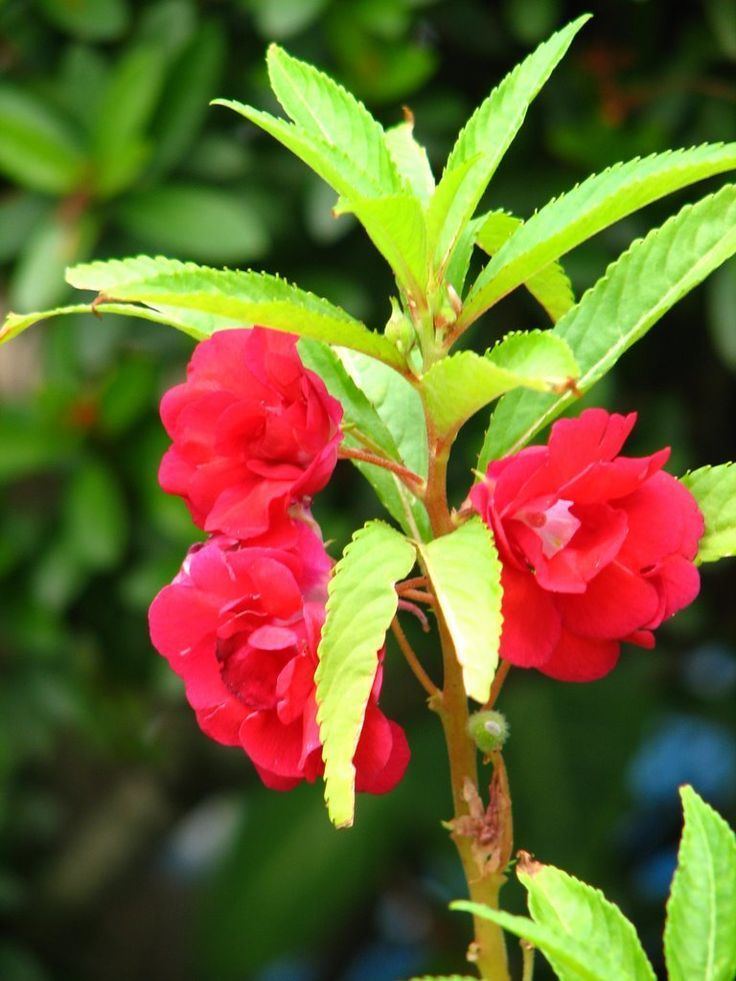
It is an annual plant growing to 20–75 cm tall, with a thick, but soft stem. The leaves are spirally-arranged, 2.5–9 cm long and 1–2.5 cm broad, with a deeply toothed margin. The flowers are pink, red, mauve, lilac, or white, and 2.5–5 cm diameter; they are pollinated by bees and other insects, and also by nectar-feeding birds. The ripe seed capsules undergo explosive dehiscence.

Gardening tips flowers how to grow balsam impatiens balsamina
Human use

Different parts of the plant are used as traditional remedies for disease and skin afflictions. Juice from the leaves is used to treat warts and snakebite, and the flower is applied to burns. This species has been used as indigenous traditional medicine in Asia for rheumatism, fractures, and other ailments. In Korean folk medicine, this impatiens species is used as a medicine called bongseonhwa dae (봉선화대) for the treatment of constipation and gastritis. Chinese used the plant to treat those bitten by snakes or who ingested poisonous fish. Juice from the stalk, pulverised dried stalks, and pastes from the flowers were also used to treat a variety of ailments. Vietnamese wash their hair with an extract of the plant to stimulate hair growth. One in vitro study found extracts of this impatiens species, especially of the seed pod, to be active against antibiotic-resistant strains of Helicobacter pylori. It is also an inhibitor of 5α-reductases, enzymes that reduce testosterone levels.
In Korea, the flowers are used to produce an orange nail varnish.
Chemistry

The naphthoquinones lawsone, or hennotannic acid, and lawsone methyl ether and methylene-3,3'-bilawsone are some of the active compounds in I. balsamina leaves. It also contains kaempferol and several derivatives. Baccharane glycosides have been found in Chinese herbal remedies made from the seeds.
Ecology
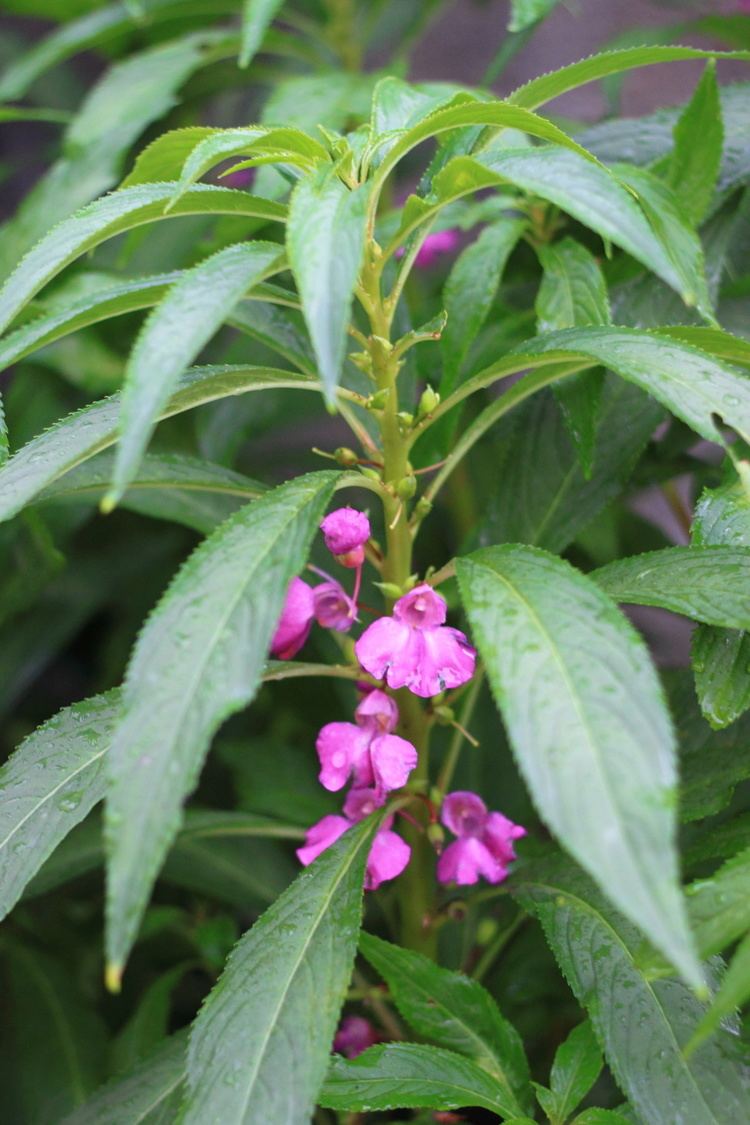
It is widely cultivated as an ornamental plant, and has become naturalised and invasive on several Pacific Ocean islands.
Names and etymology

Common names in other languages include mírame lindo in Spanish, fèngxiānhuā (鳳仙花) in Mandarin Chinese, bóng nước or phượng tiên hoa (鳳仙花) in Vietnamese, bongseonhwa (봉선화; 鳳仙花) in Korean, hōsenka (鳳仙花) in Japanese, "dopati" (দোপাটি) in Bengali, elepe in Hawaiian, and kamantigi in Chamorro.
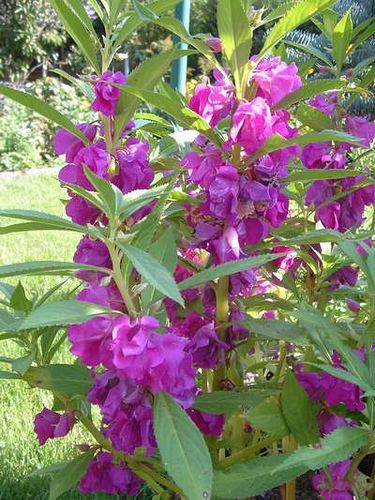
The Okinawan folk song "Tinsagu nu Hana" and the 1956 Korean film Touch-Me-Not (Bongseonhwa in Korean) are both named for the flower.
